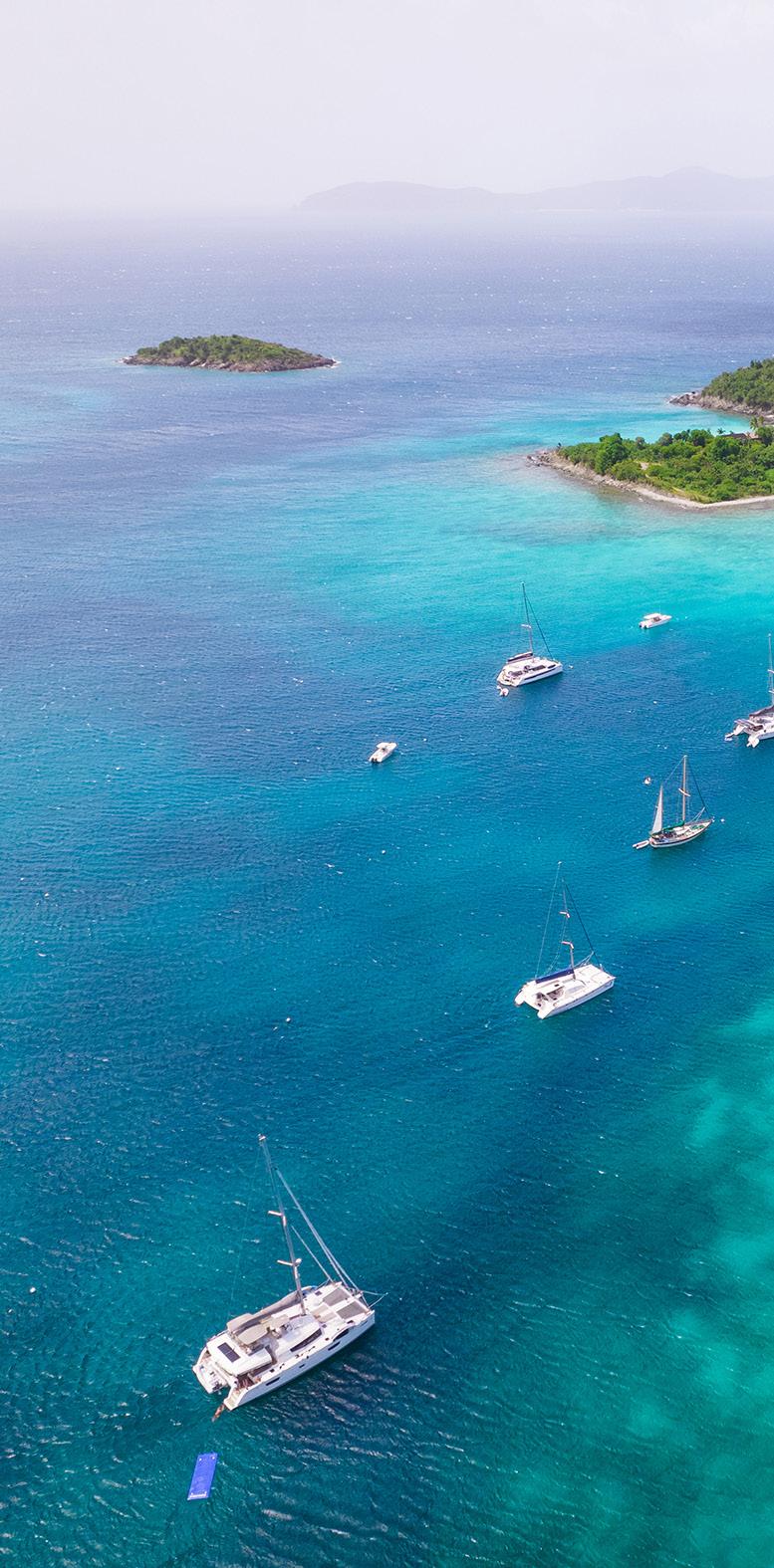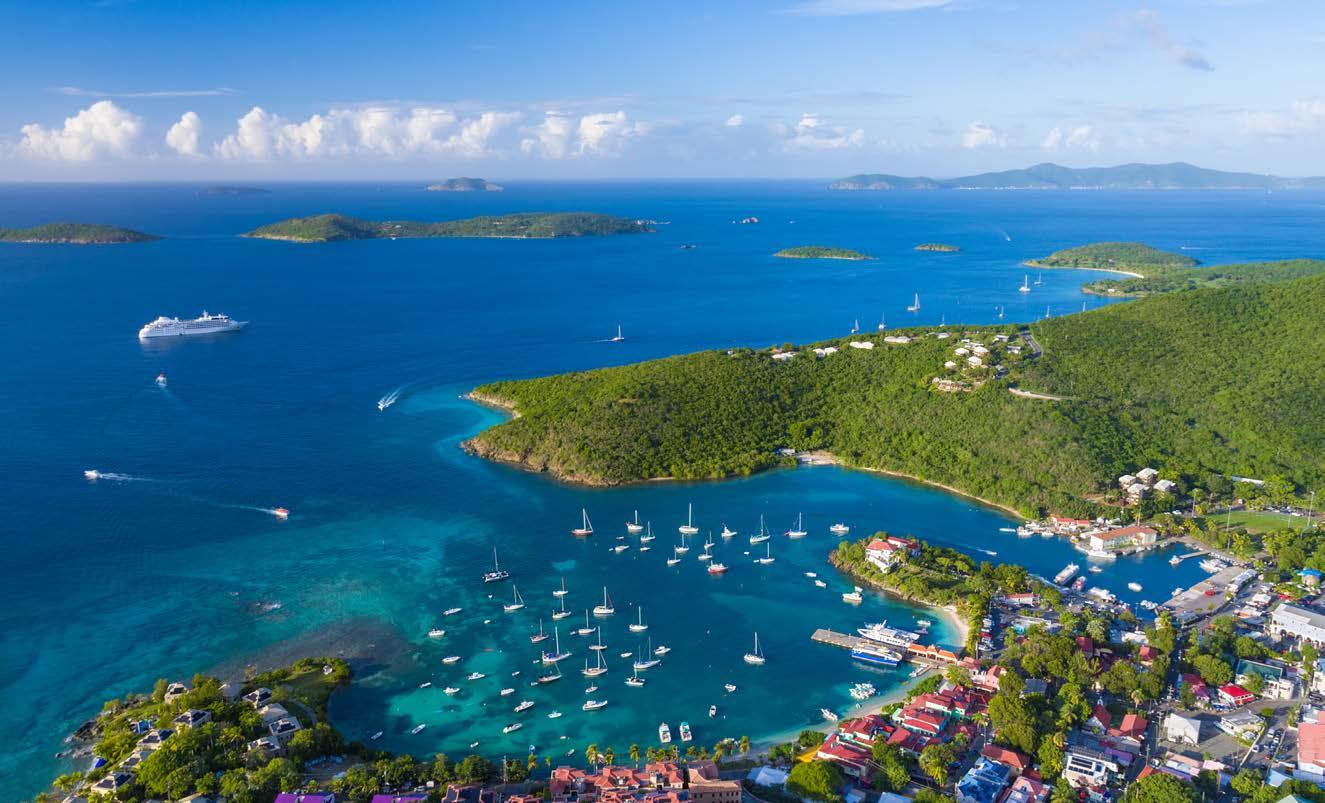
4 minute read
Virgin Islands National Park
Occupying the majority of the U.S. Virgin Island of St. John, Virgin Islands National Park is more than stunning white sand beaches — though there are plenty of those.
Whether you hike to historic plantation sites — gaining insight into the park’s complex (and troubling) past — or observe the indigenous Taino’s ancient petroglyphs, an education in scenic surrounds is in store.
Nomadic hunter-gatherers first arrived on the island from South America between 2,500 and 3,000 years ago. Then, between 1,000 and 1,300 years ago, the Taino people — who spoke an Arawakan language — established a unique culture all their own, building communal villages; farming cassava, potatoes and corn; using stone tools; and practicing a complex religion based on ancestor worship.
By the early 1600s, European slave ships transported millions of African people from their homes to the Caribbean, a brutal legacy that echoes throughout the island today.
When abolition came to the British Virgin Islands in 1834, many enslaved people escaped to the freedom found there. After emancipation in the Danish West Indies in 1848, the formerly enslaved people of St. John utilized the networks and skills they had developed to produce things like bay rum oil and charcoal on their own accord.
The Flora And Fauna
Set in the tropical Atlantic, this lush, mountainous park features terrestrial, coastal and marine ecosystems that include dry to moist forests, beaches, salt ponds, mangroves, coral reefs and seagrass beds.
Abundant in natural resources, Virgin Islands National Park hosts 140 species of birds, 302 species of fish, 22 mammal species, seven species of amphibians and an impressive 740 species of plants.

Virgin Islands Coral Reef National Monument, the submerged lands along a three-mile belt off St. John, are a diver and snorkeler’s delight. It protects 50 species of coral, along with many sponges and gorgonians, in crystal-clear waters.
Endangered hawksbill, green and leatherback sea turtles nest on St. John. Of note, the only mammal native to St. John, however, is the bat. Other inhabitants — like deer, donkeys, goats, sheep, cats, dogs, pigs and mongoose — arrived from elsewhere.
A place where moist forests give way to dry cactus scrubland, Virgin Islands’ native botanicals include flowering lignum vitae and gumbo limbo trees, in addition to woolly nipple cacti that spring from rocky outcrops; showy locustberry; and Eugenia earhartti, a rare shrub found only in two locations, both of which are on the island of St. John.
The Weather
Mid-December to April, temperatures average around 76 F, with about three inches of monthly rainfall. Mid-April to mid-December — St. John’s low season — hovers around 83 F, with about four inches of rain each month.
Hurricane season in the U.S. Virgin Islands — St. Thomas, St. Croix and St. John — occurs from July through November, the peak being in September and October.
During winter, cold fronts can bring the Christmas winds down from the north. While temperatures don’t dip significantly, the fronts can create large, potentially dangerous waves that break on St. John’s north shore beaches.
Keep up on park conditions on the NPS website.
The Hikes, Drives and Viewpoints
Reef Bay Trail
Travel through forests, see the remnants of a sugar mill and end on the beach when hiking the 4.4-mile Reef Bay Trail.
Ram Head Trail
Among the park’s most unique hikes, the 2.3-mile Ram Head Trail — accessed via the Salt Pong Trail — sits at the island’s southernmost point, passing beaches, winding around Salt Pond and concluding at grassy, rocky Ram Head point.
Lindt Point Trail
Connecting the visitor’s center and ocean, the 2.3-mile Lindt Point Tail to Honeymoon Beach passes through open, dry forest punctuated by scrubby cacti.
Petroglyph Trail
A 3.7-mile out-and-back hike, the .5mile Petroglyph Trail starts 1.5 miles down the Reef Bay Trail, revealing rock carvings at the base of the valley’s highest waterfall, amid lush, tropical vegetation.
About The Park
Location - The majority of St. John, U.S. Virgin Islands
Established - August 2, 1956
Area - 14,737 acres










